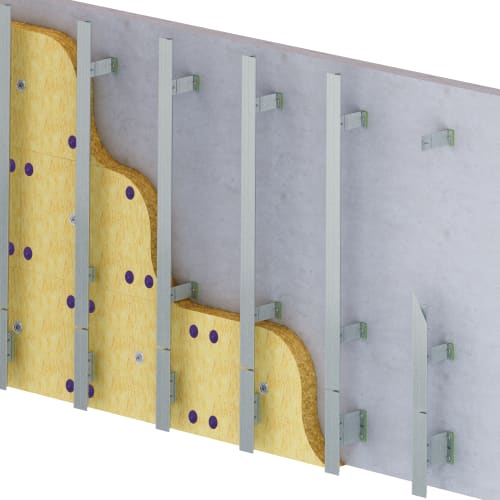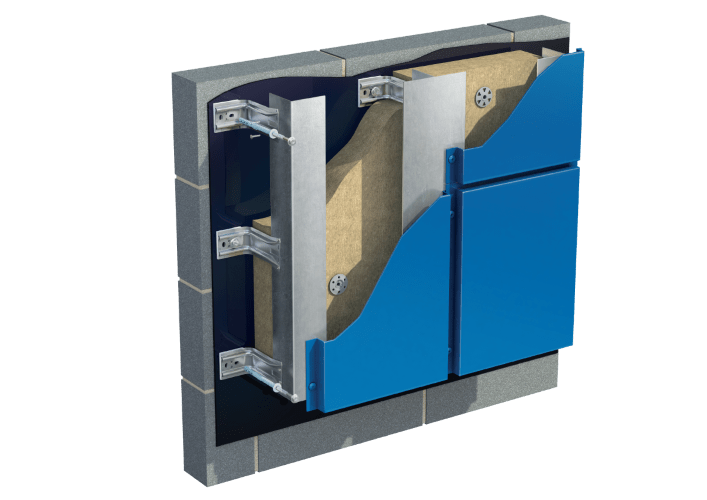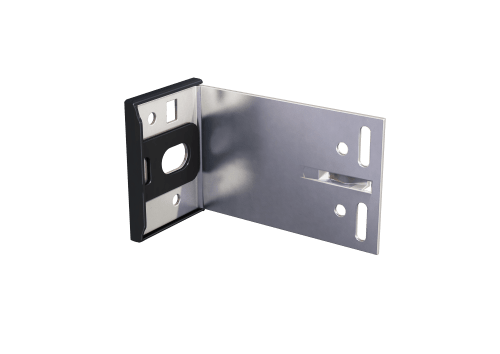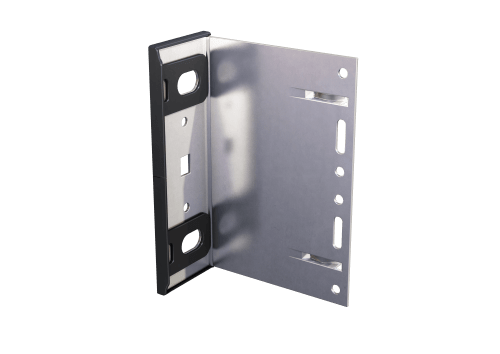
Comparing façade support systems
- Read time: 3 minutes
- Date: 13 Dec 2023
Standard façade support system
2 bracket approach - double and single brackets for fixed and sliding points
Fixfast façade support system
1 bracket approach - 1 design can be used for both fixed and sliding points
Contents
What is a standard façade support system?
What is the Fixfast façade support system?
So why choose the Fixfast façade support system?
What if I use a standard façade support system?
What is a standard façade support system?
A façade support system includes all the components needed to secure a façade safely to the exterior of a building.
Traditionally the panels are fixed to the building using a combination of brackets and rails - either vertically or horizontally. Due to the expansion and contraction of the materials used within the construction, the brackets used to fix the rails to the panels are usually fixed through 2 separate positions - a fixed point, and a sliding point to 'slide' with the building as it moves, allowing for thermal movement.
All these considerations lead to a complex facade support system that includes 2 types of brackets (double and single brackets), adaptors if the system is being fixed horizontally, and other differently sized materials to suit the system being used.

What is the Fixfast façade support system?
Our façade support system has been designed for simpler installation on-site - a unique system that prioritises simplicity over complexity.
Our unique SPIDI® Max brackets mean one design of bracket can be used for vertical and horizontal installation configurations, and has been engineered for both fixed and sliding points.
Available in aluminium and 2 grades of stainless steel (A4/316 and A2/304), these brackets are uniquely ribbed to offer superior strength when installed.

So why choose the Fixfast façade support system?
The main advantage of using our system is that only one type of bracket needs to be purchased for use in any support system application. Our one size of bracket suits all standard substrates - concrete, masonry, SFS and timber - and comes with the correct sized holes to fix the brackets back to the substrate securely.
Other advantages of the system include:
The 'one bracket design' eliminates the need for a double bracket for fixed points, and single brackets for sliding points within the façade construction, simplifying product selection
Often used, horizontal C-channels or tophats within the construction allow the panel layout to be independent of the frame within the substrate. In a standard façade system, different sizes of tophats are required to suit the double and single bracket - however, with SPIDI Max, only one size of tophat is needed - different sizes aren't required as there is only one size bracket
SPIDI Max works for vertical and horizontal rails, with no extra requirement for special brackets or adaptors
The same SPIDI Max bracket and rail system is suitable for soffit applications, and available in lengths up to 900mm long
Brackets are available in 3 types of material: aluminium, A4/316 grade and A2/304 grade stainless steel. Stainless steel brackets offer lower U values than aluminium products
Pre-mounted Thermostop pads mean quicker installation on-site
What if I use a standard façade support system?
There are a lot of façade support systems in the industry, and the question is: which one do you choose?
As every façade project is different and unique, the answer is - it depends.
A standard façade support system includes 2 types of bracket - a double bracket for fixed points within the build-up, and a single bracket for sliding points within the build-up. These brackets generally come with pre-assembled thermal break pads that break the transfer of heat from the building to the outside atmosphere.


With 2 types of bracket to install at varying points on the façade, the fixed point brackets come with an added layer of complexity - these specific brackets require 2 fasteners to fix back to the substrate, which adds up and means that the support system will take longer to install. Having to fix a bracket with 2 fasteners means more fasteners, more drill bits: ultimately meaning greater cost for you.
Most systems in the industry are manufactured using extruded aluminium - although not as strong as stamped aluminium, these systems do conform to EN standards - check with your chosen supplier for details. Interestingly, we have feedback from installers that standard systems have less rigidity when installed, when compared to the stability offered by our high strength ribbed bracket design.
A perceived advantage to using a standard façade support system is that some manufacturers have online tools that produce - with the input of a few project details - a quick cost of the system that you need to purchase. Whilst these tools can provide a quick result for use when estimating a guide price on a project, we would always recommend engaging with our technical team - who can provide a detailed calculation specific to the project location, and engineered to offer the most efficient, cost-effective system.
In summary, you're the ultimate decider of which façade support system to use on your project. Compliant systems are now the norm within the industry, so it's down to you whether you go for a standard 2 bracket fixed approach, or the strength, versatility, simplicity and cost-effectiveness of the Fixfast façade support system.



